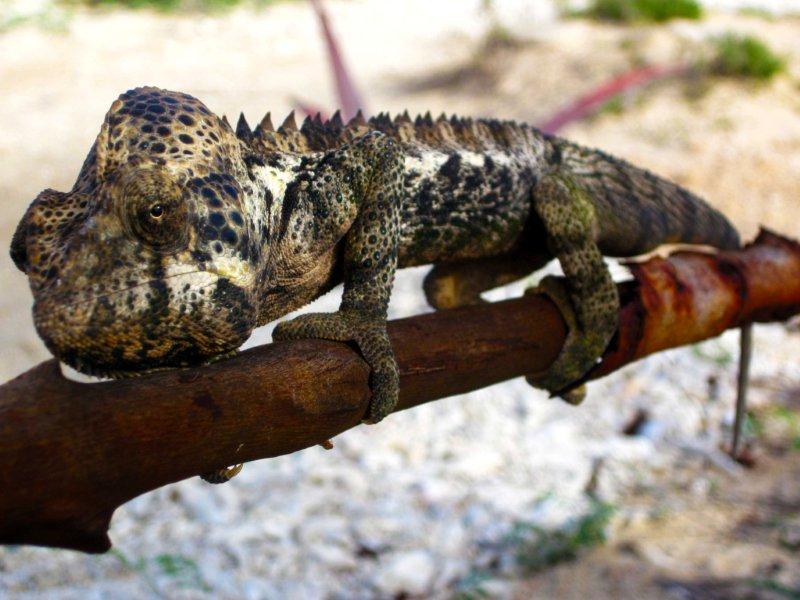by Shanta Barley, Field Scientist, Madagascar
With 57 of the world’s 131 species of chameleon, including the largest and the smallest, Madagascar has a monopoly on the family’s diversity. This unusual individual (see photo, below) was spotted clinging to a wooden fence during breakfast today. Named for its wart-like scales, Furcifer verrucosus is one of the largest species of chameleon in the world – just 10 centimetres short of its title-holding cousin, Furcifer oustaleti, which has a maximum length of 70 centimetres. The warty chameleon, as it is commonly known, also possesses a fearsome row of 40, four millimetre long spines on its back. Like all chameleons, it is well-adapted to tree life, with tong-like hands and feet that latch on to twigs and a long, prehensile tail that acts as a back-up lasso.
Although some species of chameleon change colour to blend in with their backgrounds, the majority only do so to express irritation or anger when they’re cover has been blown. As we watched, the individual blanched and developed vertical brown bars – the chameleon’s equivalent of a grimace. Humans are only just starting to catch up with this astounding ability to change colour to suit mood: in 2006, scientists at the University of Connecticut in Storrs developed threads that, when exposed to an electric current, change from orange and red to blue, a technology that paves the way for “smart,” mood-sensing garments. Of course, the chameleon’s control over its canvas is far more sophisticated – but then it has had over 20 million years of evolution to perfect the art.
For more info on how chameleons are influencing fashion please visit this web page by National Geographic


